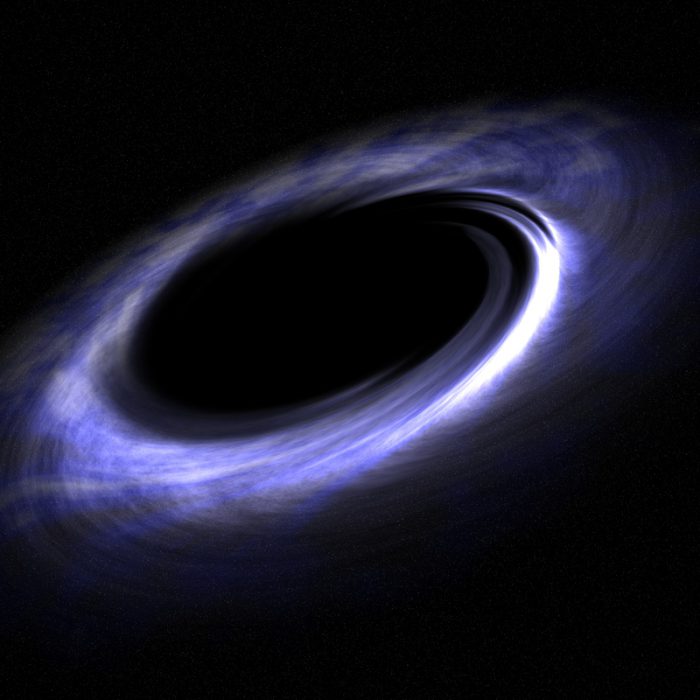Black holes are one of the most mysterious and powerful forces in the universe. In a nutshell, here's what they are: a point of mega-dense matter with a gravity so strong that nothing can escape it. Not even light, a.k.a. the fastest thing in existence.
That last point goes a long way toward explaining why we've never actually seen a black hole. After all, how can you see something that is literally sucking all of the light away? But that's exactly what scientists are trying to do for the very first time.
Take a picture of a black hole.
Hey! Who sucked up the lights?
Instead, scientists look for black holes by inspecting the way that stars move. If a bunch of stars are orbiting around an empty spot in space, you can bet that the blank area is a black hole. This video, which features 16 years worth of actual footage sped up 32 million times, shows some of those stars in action around Sagittarius A. That's the supermassive black hole at the centre of our Milky Way galaxy!
The term "supermassive black hole" might sound a bit made up, but it is real. It's used to describe the colossal black holes that are found at the centre of galaxies. Think of them as the pin in the middle of the pinwheel! And Sagittarius A is the target of a brand new project that will aim eight of the world's most powerful radio telescopes at the exact same spot for ten days: April 4 to 14.
Big event horizon
These telescopes are located all over the planet, from Hawaii to Chile, the South Pole to France. The project is called the Event Horizon Telescope. Its name comes from what it's trying to photograph. The event horizon is the exact point where matter gets sucked forever into the blank abyss of a black hole. Once something crosses it, there's no coming back.
In theory,the event horizon would look like a super-fast swirling ring of light, gas, and dust that surrounds the black hole itself. That's how artists have always illustrated it. Usually, it looks something like this:
But taking a real picture of one? That's tough. For starters, an event horizon is very thin from the side. So it can easily disappear from view. Then there is the fact that the black hole has so many giant stars orbiting around it. (Remember, this is found at the centre of the entire galaxy!) The powerful light from these stars blinds us to the black hole behind them. That's why we have no actual image of an event horizon.
The Mauna Kea Submillimeter Array in Hawaii is one of the eight radio telescopes being used in the Event Horizon Telescope. (Getty Embed)
But we've never looked at one with something as powerful as these eight radio telescopes. They read radio waves, which human eyes cannot eyes, and then turn them into images that we can see. According to MIT (the Massachusetts Institute of Technology), these telescopes could "count the stitches on a baseball from 8,000 miles away". Will that be powerful enough to finally bring a black hole into the light?
Hole-d on tight! If it works, it will be quite the "event"!
 For now, the only "pictures" that we have of a black hole are illustrations like this computer image. (© Pseudolongino | Dreamstime.com)
For now, the only "pictures" that we have of a black hole are illustrations like this computer image. (© Pseudolongino | Dreamstime.com)










eeeeek!!!!!! but cool
What would it look like if you got sucked into a black hole?